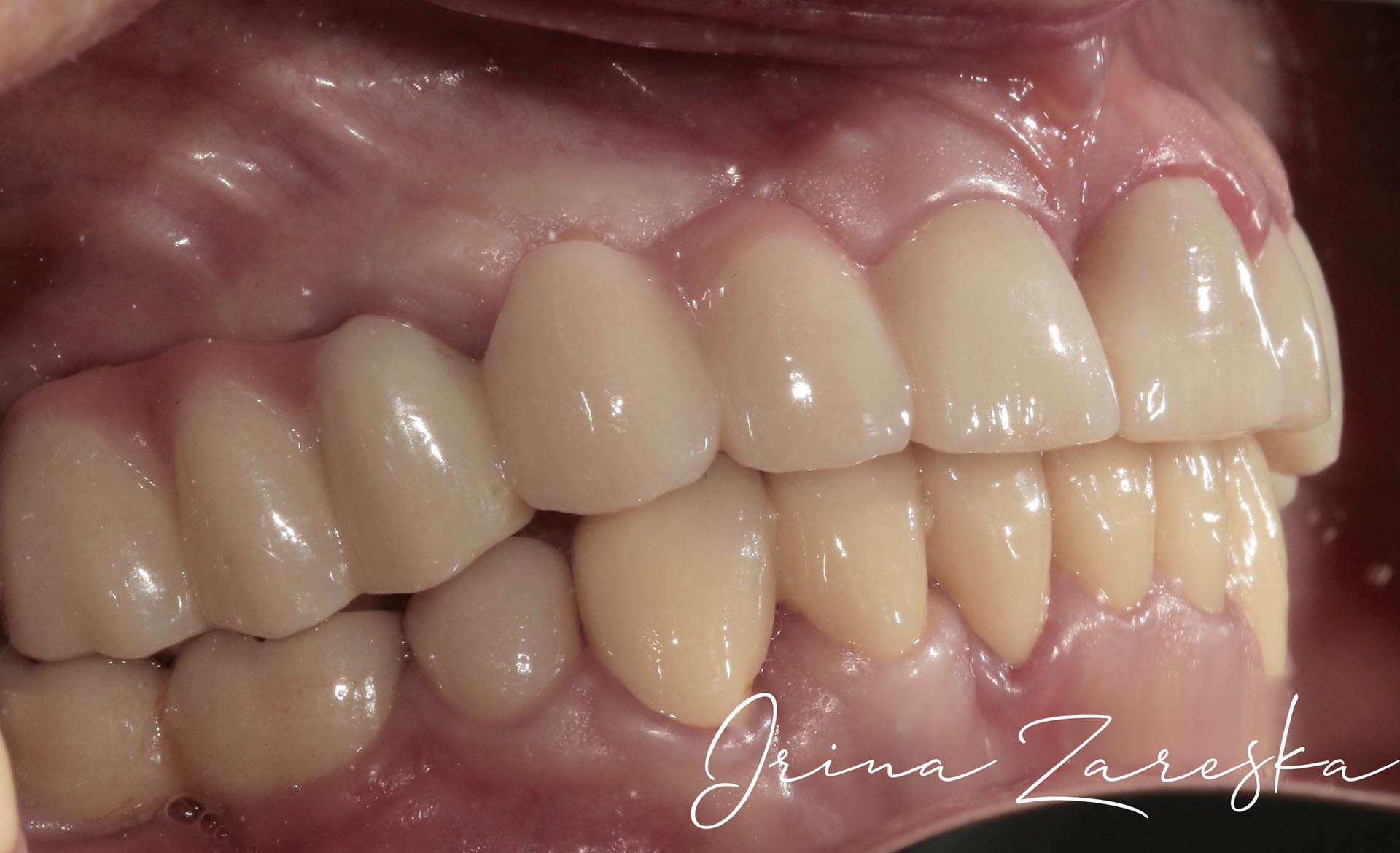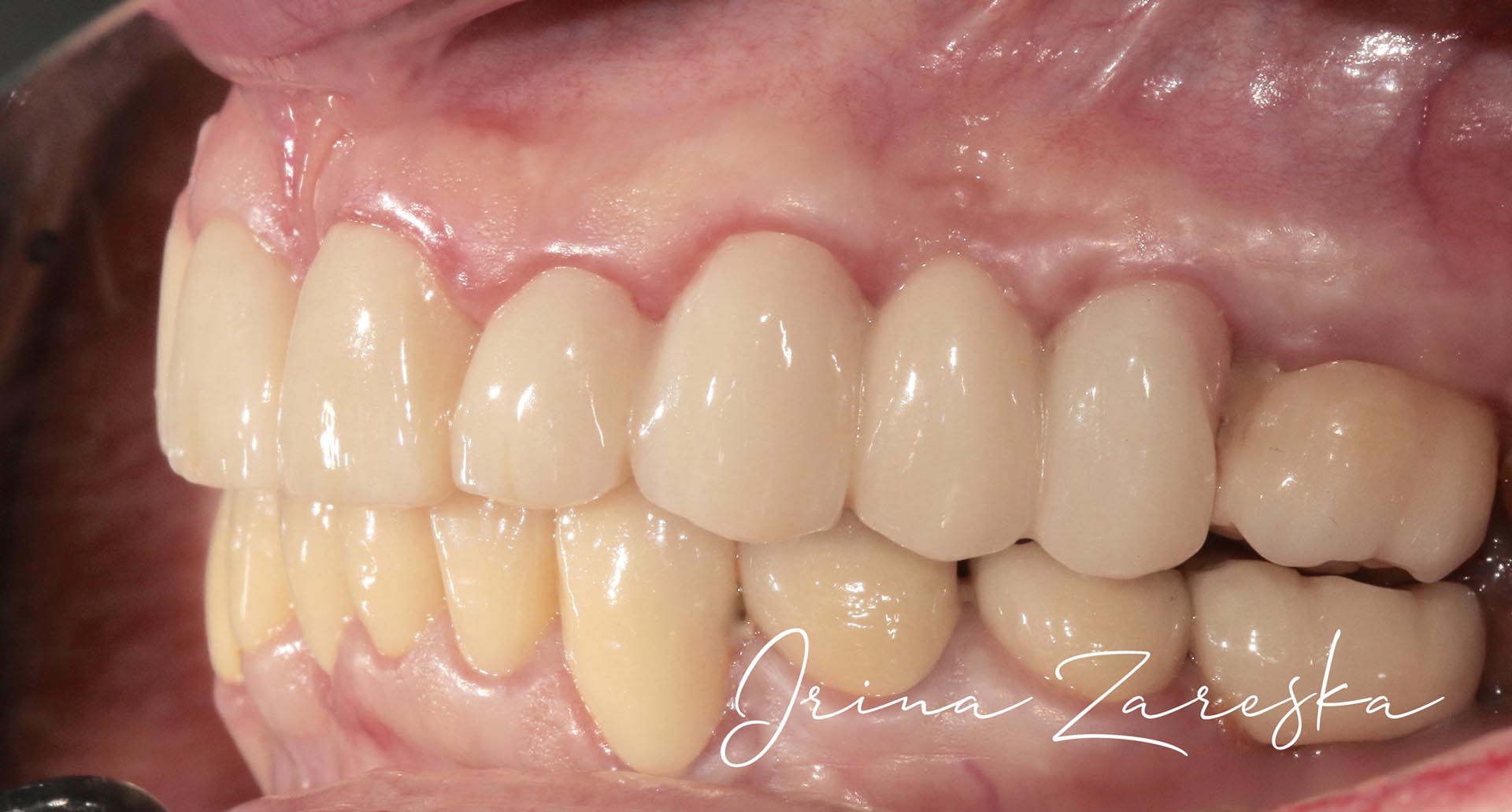PRESS- CERAMIC VENEERS
VENEERS
Veneers are ceramic shells specially made for front teeth. These extremely thin porcelain facets (about 0.5 mm), are glued over the tooth, matching the tooth color, when they are transparent, or masking any undesirable natural tooth color with another hue and opacity. Veneer ceramics have positive qualities related to tension, resistance to chewing pressure and most importantly biocompatibility with the surrounding soft tissues.
The most common indications for veneers are:
- Broken teeth
- Unaesthetic fillings
- Dark (tetracycline) teeth
- Gaps between the front teeth
- Teeth with uneven size or malposition.
Compared with regular teeth crowns, the use of veneers is very modest to dental tissues, because minimal tooth structure must be prepared.
PROFESSIONAL IN OFFICE WHITENING
TEETH WHITENING
Preserving flawless white teeth is not easy. Coffee, tea, nicotine, red wine and certain foods lead to a rapid staining of the teeth. The cure for this is a professional whitening done by special dental chemicals, which leads to prolonged illumination color of teeth. The unwanted initial discoloration of the teeth caused solely by dental plaque, must be removed before starting the treatment.
While toothpastes with whitening features have only a temporary effect, professionally used concentrations of hydrogen peroxide or carbamide peroxide, reach the inside of the tooth and leave long-term effect on the color. They act on dentin level pigments, compared to the tooth paste which acts superficial.
ALL CERAMIC ZIRCONIUM CROWNS
Zirconium dioxide is an excellent material for metal-free restorations because of its bio-compatibility, strength and durability. The feature of semi-translucency of zirconium gives the possibility to reconcile the dentin, the cervical and the enamel colors with opaque colors, so these are decisive factors for ideal aesthetics of these crowns in any circumstances.
All ceramic crowns today are standard material for aesthetic reconstructions on natural teeth in the form of veneers , crowns, ceramic bridges, inlays and onlays, as well as ceramic crowns and zirconium abutments over implants.
Due to the fact that metal- ceramic crowns and bridges have limited aesthetic characteristics with the occurrence of the gray edge in time, sometimes no vivid color, and possible allergy to metal, they are now slowly going into history.
Cubic zirconia enable the translucency of the natural tooth substance color and in reverse allow light to pass through ceramics to natural tooth. Prosthetic restorations made of this kind of material obtained optical properties similar to natural teeth. Designing the zirconium construction with CAD / CAM gives accurate fit in less than 50 microns.











